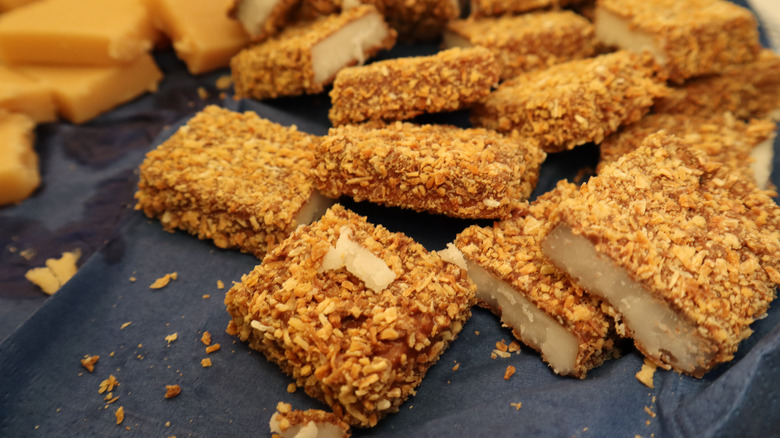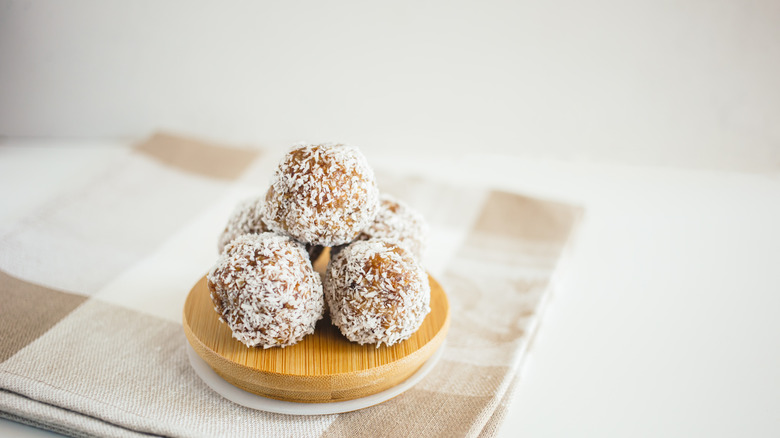How Potatoes Are Used To Make Scotland's Unique Macaroons
Before we begin to describe the delicacy that is the Scottish macaroon, we need to clear up one crucial distinction. These are not the colorful macarons you see displayed in coffee shops and bakeries. Foods Guy explains that Italian and French macarons can vary in flavor but are generally identified as two round cakes filled with frosting, custard, jam, or a cream-based spread. Traditional Scottish macaroons — note the spelling difference — aren't brightly colored, but they are made by dipping potato fondant (you read that correctly: mashed potatoes mixed with sugar) into chocolate, then coating the treat in toasted coconut flakes, instructs Baking with Granny.
According to Scottish Scran, John Justice Lees is believed to be the creator of the Scottish macaroon, having whipped up the recipe sometime in the 1930s. And while sneaking potatoes into any kind of dessert might sound like trickery, according to Baking with Granny, you can't actually taste tell that these delicious morsels contain potatoes.
A fondant made with potatoes
They do provide texture, however, if you take Baking with Granny's advice and choose a starchy and "floury potato" for the recipe. The outlet suggests first boiling potatoes with the skin on to ensure the potato doesn't end up too soggy. Then mash the cooked potatoes to create a smooth base, and let them cool completely. At this point, you can begin mixing in powdered sugar to build the fondant. To ensure the perfect texture, the ratio of potato to sugar can be adjusted before the treat is dipped into chocolate. Lastly, the chocolate-dipped dessert is finished with coconut flakes.
Scottish macaroons can be fashioned into rectangular bars or rolled into balls that resemble truffles (via Scottish Scran). Regardless of the shape, it is easy to mistake the Scottish delicacy for regular coconut macaroons, which are made with egg whites, sugar, and shredded coconut, but no potatoes. And Larder Love warns that you cannot use leftover mashed potatoes to make these treats, as the potatoes should not have any extra ingredients like seasoning or milk added to them.
Serve the finished treats alongside a cup of your favorite warm drink or wrap them as gifts to give to friends, and see if they can identify the surprise ingredient.

